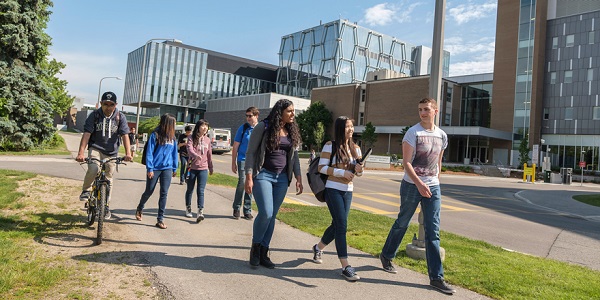High School vs. University
What's the difference between secondary and post-secondary school?


You’ve likely heard before that university and high school are different, but you may not know what these differences really are. If this is the case, don’t worry. Here are some of the biggest differences.
Flexibility
Don’t want any classes at 8 a.m.? No problem. Many universities offer students the ability to switch their classes around and create a schedule they’re happy with. Keep in mind that some programs may be more flexible than others!
No surprises
Imagine knowing exactly when your assignments are due and when all your tests are, right on the first day of class. That’s university. On the first day of each class, you’ll receive the course syllabus which outlines everything! Planning just got so much easier.
Different types of classes
The structure of classes can vary. There are lectures, which often involve the professor standing at the front of the class while students listen and take notes. There are also labs, where students do hands-on work — often with a partner — and tutorials, where classes are smaller in size and involve class discussion.
Wide variety of courses
In university there are courses on topics you wouldn’t ever expect. For example, at Waterloo, we have courses on Beyoncé and Harry Potter! University is a great chance to explore a variety of subjects.
Increased independence
In high school, you're likely used to your teachers giving you frequent reminders of deadlines, or reaching out if you've been away. In university, whether you show up to class on time, hand in your assignments, or pass your tests, the responsibility is yours. Help and guidance are always available, but you’re expected to take the initiative to seek guidance when you need it. Our top time management tips are sure to help you get a handle on things!
Professor and teaching assistant hours
In high school, you’re likely used to asking your teacher questions before, after, or even during class. Although this can still be an option in university, it is less common. Most professors will have teaching assistants who help with the course. Both the professors and teaching assistants will hold weekly office hours where you can either drop in or schedule an appointment to see them. Meeting your professor during office hours also helps you build a relationship with them, which is always a good thing.
Class lengths
In high school, classes are all the same length. In university, this is not the case. You may have some classes as short as 50 minutes and some as long as 3 hours!
Travelling between classes
It’s quite likely that in high school you could walk down a hallway or staircase to get from one class to the next. In university, this could happen, but it’s just as likely for you to have to walk across campus to get to your next class! When you’re sitting in class for hours, the walks in between can be a refreshing break.
Extracurriculars
Generally, universities have a much larger student population than high schools. More students means more opportunities for clubs, societies, and events! If you didn’t find something that interested you in high school, university can be your chance to find something to get involved in! At Waterloo, we have over 200 clubs, and six faculty societies for students to get involved in.
Although there are many differences between high school and university, you’ll become an expert in no time! We hope you learned something new and that you feel more confident preparing for your first day of university.